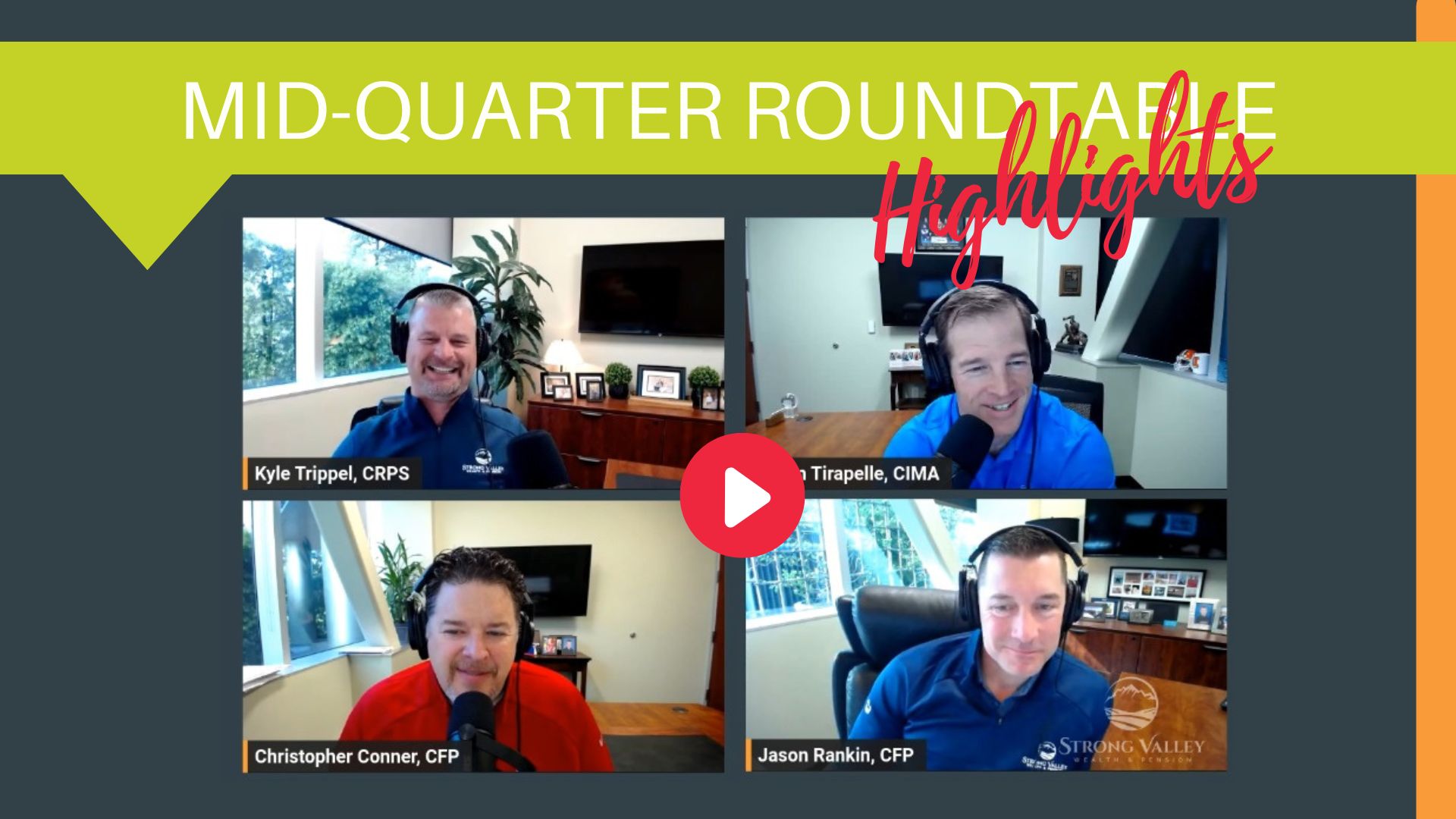You are now leaving the Strong Valley Wealth & Pension, LLC ("Strong Valley") website. By clicking on the "Schwab Alliance Access" link below you will be entering the Charles Schwab & Co., Inc. (“Schwab”) Website. Schwab is a registered broker-dealer, and is not affiliated with Strong Valley or any advisor(s) whose name(s) appears on this Website. Strong Valley is/are independently owned and operated. Schwab neither endorses nor recommends Strong Valley. Regardless of any referral or recommendation, Schwab does not endorse or recommend the investment strategy of any advisor. Schwab has agreements with Strong Valley under which Schwab provides Strong Valley with services related to your account. Schwab does not review the Strong Valley website(s), and makes no representation regarding the content of the Website(s). The information contained in the Strong Valley website should not be considered to be either a recommendation by Schwab or a solicitation of any offer to purchase or sell any securities.

Are you looking for power and control over your own budget? One of the hardest things to do in life is realizing when a want is not a need. Not only is the choice subjective, it is often difficult to fit into simple categories. But in the long run, it’s the secret to sustaining yourself from day to day in building a budget that balances your needs with your wants and puts you in a better position to reach your financial goals.

Budgeting is a balancing act. The secret to sustaining yourself from day to day while also reaching financial goals is building a budget that balances your needs with your wants. Pinpointing the difference between the two is a subjective proposition.
In budgeting worksheets, some people object to separate categories for items in the “wants” category. Home internet, for example, is classified as a want and not as a need. But if you do not work from a home office (in which case your home internet is a business expense), there’s a good chance that home internet is a want (because let’s face it, you’re probably using it primarily to watch Netflix).
And the same is true for your cable television — your Netflix subscription and your iPhone as well. It also goes for your hair dye … These are all wants and not needs. You totally can do without these things, if you were forced to. They’re not necessary to live, as painful as it might be to lose them.
Of course, wants and needs, sometimes, don’t fit into neat, distinctive categories. It’s too simplistic, for instance, to say that your grocery store spending is a need. Your entire grocery bill is a combination of wants and needs. Bread, milk, eggs, and whole fruits and vegetables can be classified as a need.
But, on the other hand, chips and cookies are most certainly not a need. Fruit juice is a want, especially if it is of that upscale variety. Milk is a need, but organic milk is a want. And so is the whole grain, organic honey-infused bread.
The 50/30/20 budget says that 50 percent of your after-tax income should be spent on “needs,” 30 percent should go to “wants,” and 20 percent should go to savings and debt reduction. That means there’s nothing wrong with buying fancy bread and milk or subscribing to Netflix. The 50-30-20 budgeting rule of thumb allows you to spend 30 percent of your take-home pay on things you want. The key is to separate your wants from your needs so that you’re more self-aware of how you’re spending money.
Takeaway
Distinguishing “wants” from “needs” will truly help you realize how much power and control you have over your own budget. If you’re choosing to spend money on wants, you easily can choose those items and re-direct your money elsewhere. After all, budgeting, at its very core, is not always about crunching numbers. Budgeting is the art of aligning your spending with your values.



